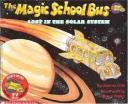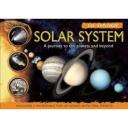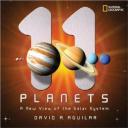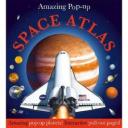The following resources are intended for a range of elementary grades but fit specifically with the VA Science SOLs 4.7 and 6.8. In the fourth and sixth grades students learn about characteristics of the planets, the moon and the sun, as well as other aspects of our solar system such as other moons, asteroids and comets. These books, websites and additional resources can therefore be used across the grades to help students learn all about our solar system (and beyond!).
Books
The Magic School Bus: Lost in the Solar System
By Joanna Cole (Author) and Bruce Degen (Illustrator)
This book, from the famous Magic School Bus series, chronicles the class’ trip to outer space. When something goes terribly wrong, however, and Miss Frizzle loses her class, the students must use clues about the planets to find her location in space. While this book may be intended for a younger audience, it provides a fun introduction to the different planets, and the composition of the solar system, that a variety of ages will enjoy.
Solar System: A Journey to the Planets and Beyond
By Ian Graham
This exciting book mixes 3D photographs and illustrations to give a brief background about each of the planets. It also contains information about missions to space, particularly the Mars Rover and Apollo 11 missions, and provides pop up pages to provide more information in an interactive manner.
By Cynthia Pratt Nicolson (Author) and Bill Slavin (Illustrator)
While this book is meant for those aged 4-8, it provides a wealth of information regarding the differences between the planets, why the sun shines, and how the planets travel around the sun. It could be an excellent tool for differentiation or an introduction to a unit on the planets.
11 Planets: A New View of the Solar System
By David A. Aguilar
This book was written in response to the declaration that Pluto is no longer a planet and therefore chronicles not only the traditional eight planets but the dwarf planets as well. Included in the book are charts of planet statistics such as diameter and temperature. Because it goes beyond a simple study of the milky way and introduces other galaxies and sometimes uses complex vocabulary, this book is recommended more for sixth grade than fourth grade study.
By Carole Stott
This book uses dramatic photographs to provide in detail looks at the moon, the sun and the planets as well as an introduction to the milky way and other solar systems. This book is unique in that it also discusses the possibility of life on other planets (or the impossibility) and the future of space travel. It provides a comprehensive glossary that could be great for students’ research.
Websites
The Planets of our Solar System for Kids
This website uses a very simple layout (that facilitates students exploring it on their own) that explains characteristics of the planets like rotation, temperature, size and the Roman origin of their names. Links to information are provide in the form of photographs of the planets, giving students a reference for knowing what the planets look like.
StarChild: A Learning Center for Young Astronomers
This website, developed by a division of NASA researchers, is intended to provide students with information about the shape of the solar system, the location of the planets, and definitions of other space phenomena like asteroids, comets and black holes. It also provides a glossary and links to many games and activities that can be used in the classroom.
Astronomy for Kids- The Solar System
This section of the website, Astronomy for Kids, provides an interactive diagram of the milky way, complete with rotating planets, comets and asteroids. Students can click on one of the rotating objects to learn more about it and see pictures. By clicking on different links, students can learn about the different moons of the planets as well.
This activity, provided by the BBC, helps students learn about how the earth, sun and moon orbit around each other. By inputting a number of months, students can try to make the earth orbit around the sun a certain amount of times. A moving diagram shows how the moon orbits the earth while the earth orbits the sun and students can click on each to find more information about their characteristics.
Blast Off on a Trip Into Our Solar System!
Harcourt publishers presents this website in which students can see photographs and positioning of the planets. By clicking on the planet photos, students learn information like why each planet looks the way it does, which number it is away from the sun, why seasons exist and how many days each planet takes to orbit the sun.
Additional Resources
By DK Publishing
This book would serve as an excellent classroom reference for any space or solar system unit. It tackles tough questions like, what space is, when it began and how it began as well as exploring space related subjects like satellites, stars, space exploration, astronomers and much more. By combining photos and text of varying sizes DK Publishing has created a very readable encyclopedia.
How the Universe Works: 100 Ways Parents and Kids Can Share the Secrets of the Universe
By Heather Couper and Nigel Henbest
This book is full of activities that can be used in the classroom for a variety of lessons on space. Activities are divided up between those that help explain the solar system, the sun, the stars and the cosmos (or the galaxies beyond). This book explains how parents and children (or students and teachers) can use the activities included to create a “Home Laboratory” and a “Home Observatory” of their own.
Space School- The Solar System
This video, from the Space School series and presented by DiscoveryTV on YouTube, uses beautiful images to explain to students the workings of the universe. This movie explains how the universe was formed, why the planets rotate the sun and what the planets, asteroids, sun and moon are made of, all in the fun format of a space teacher talking to a group of students in a futuristic space school.
By DK Publishing
This book describes the planets of the milky way, the sun and the moon using a variety of interactive charts, pop-ups and pull-outs that students could be posted around the classroom, copied as a reference for individual students, or kept in the classroom library as an excellent reference source.






